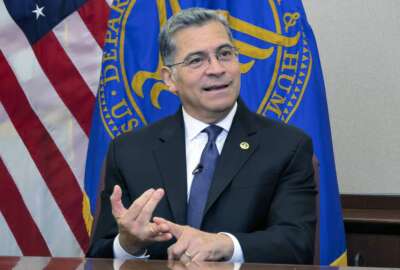We need to address ‘deep, systemic problems’ to improve federal workforce morale
Rep. Mark Meadows (R-N.C.) wants to improve working conditions for federal workers by dealing with poorly performing employees more quickly. He said most federal...
Commentary by Rep. Mark Meadows
The U.S. federal workforce is the greatest public workforce in the world. Oftentimes, federal workers are unfairly viewed as just another cog in the wheel, when in reality our workforce is comprised of thousands of individuals committed to making a difference in the lives of their fellow Americans. From the history buff at the National Archives and Records Administration seeking to preserve historic documents for generations to come to the security expert at the Department of Homeland Security (DHS) committed to protecting our nation, our federal workforce is comprised of dedicated public servants. 
Unfortunately, many federal agencies have deep, systemic problems that are hampering employee success, driving away good employees and creating environments where cases of misconduct and mismanagement go unaddressed.
The Oversight and Government Reform Subcommittee on Government Operations, which I am the chairman of, recently held a hearing on “The Worst Places to Work in the Federal Government.”
In the hearing, we examined the findings of data compiled by the Office of Personnel Management (OPM) that was collected from federal employees through anonymous surveys. Based on employee responses, the data found that the DHS, the National Archives and Records Administration and the U.S. Chemical Safety and Hazard Investigation Board (CSB) were among the worst places within the federal government to work.
The bipartisan hearing focused on what factors at various agencies contributed to low employee morale and what could be done administratively and legislatively to fix it. Two factors consistently contributed to low morale across a broad spectrum of agencies: an inability to fire bad actors and a lack of merit-based promotions and pay.
Federal employees are often unjustly painted with a broad brush, based on the actions of the few ill-performing individuals that agency heads are unable to fire. Take for example a notorious case at the Environmental Protection Agency (EPA) where an inspector general found that an employee had watched up to six hours of pornography a day on his government computer and had downloaded as many as 7,000 files of explicit material. The employee was not only not fired, but received yearly merit-based bonuses.
While the case at the EPA is an extreme example of gross misconduct by a federal employee, the OPM report found that blatant misuse of resources occurred governmentwide. Throughout federal agencies, management teams’ award bonuses and raises based on tenure, rather than based on quality of performance. This is incredibly discouraging to hardworking federal employees, many of whom expressed frustration in the survey about their desire to move up within the agency, but having a hard time doing so, despite being deserving.
The vast majority of federal employees are honest, hard-working people who want to be good stewards of American taxpayers’ dollars, but there is great frustration when bad actors are not punished and ongoing remain unaddressed. I’m grateful to Chairman Jason Chaffetz (R-Utah) and Ranking Member Elijah Cummings (D-Md.) for their continued commitment to improving our federal workforce.
I look forward to working with agency heads and federal workers to find ways to improve working conditions through either legislative or administrative changes. This begins with addressing the issues reported by the OPM that came directly from federal workers. Our federal workforce is second to none and I’m committed to ensuring that we don’t allow a few bad actors to mar our proud tradition.
Congressman Mark Meadows is a Republican from North Carolina. He serves on the Oversight and Government Reform Committee where he is the chairman of the Subcommittee on Government Operations.
Copyright © 2025 Federal News Network. All rights reserved. This website is not intended for users located within the European Economic Area.





